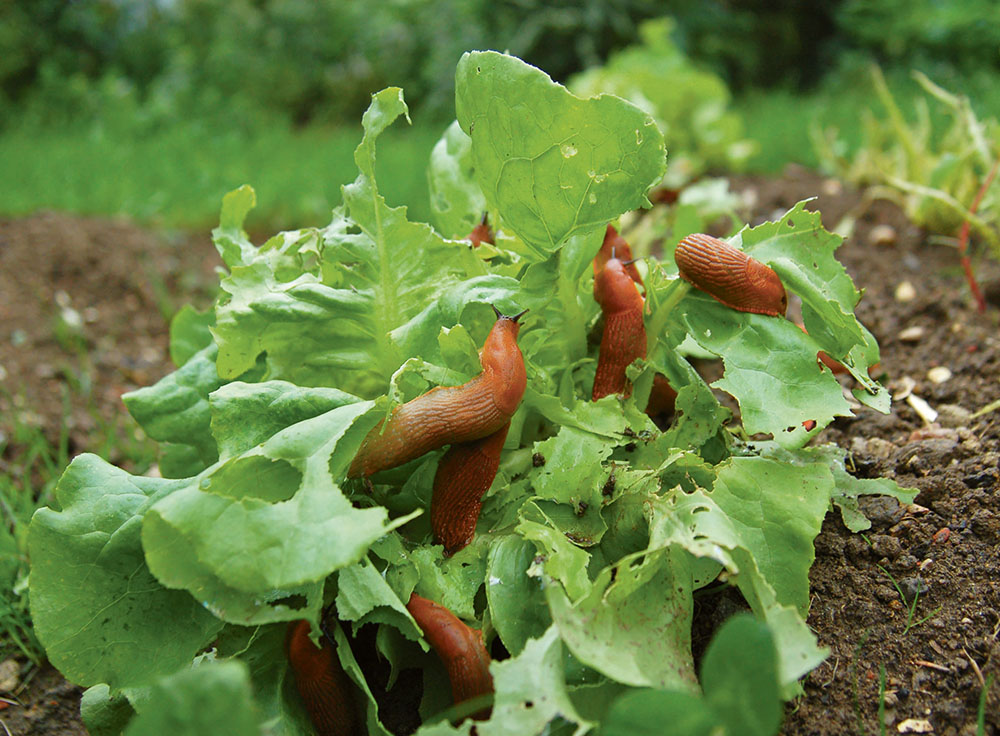
In rainy summers and cloudy autumn, slugs can attack cabbage. They cause significant damage to the crop - spoil the leaves and contribute to the decay of the heads. You can deal with them in various ways: both with chemicals and folk remedies. It is noteworthy that folk methods of combating slugs, unlike other drugs, are safe for crops and humans, however, pests are eradicated forever.
Content
What slugs look like
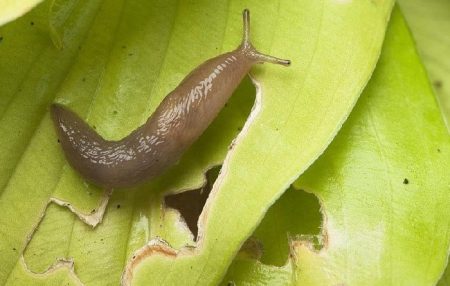
This is a gastropod mollusk, which has a slippery elongated body with a length of not more than 5 centimeters. The color is almost black, so when possible slugs are clearly visible on the green foliage. The main feature is the nocturnal lifestyle that they lead, hunting only at dusk or at night.
The pest eats cabbage leaves. In addition to cabbage, he often switches to neighboring crops. Tomatoes, zucchini, peppers, and eggplant suffer from his attack. The mollusk lives in a dark place where there is high humidity. An ideal place to place slugs is a rotting log, a rusty bucket, wet firewood.
The main signs that slugs attack cabbage are:
- the appearance of large holes on the cabbage foliage;
- the appearance of silver mucus;
- the vegetable begins to languish and grows poorly.
If there is a presence of all these factors, then they immediately begin to save the crop, otherwise the slugs will eat it completely without the possibility of recovery.
What harm does
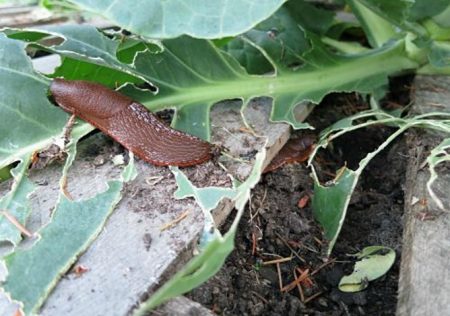
In addition to the fact that the cabbage loses its appearance due to gnawing holes, it also becomes infected with many infections. Slugs are carriers of almost all known infections. They infect vegetables with rot, powdery mildew, late blight and other equally serious diseases.
A vegetable after slugs is not suitable for consumption, as it can be poisoned.
Reasons for the appearance
Most often, slugs switch to cabbage from a neighboring plant or from a neighboring site. High humidity and low temperature provoke the appearance of pests. If the weather is cloudy and the temperature is 20-22 degrees, these conditions are ideal for slugs.
Sometimes gardeners themselves provoke an attack by mollusks because they do not cultivate the greenhouse in spring and autumn, and they do not dig up the soil and do not water it with insecticides. Neglecting the cultivation of crops leads to sad consequences.
How to get rid
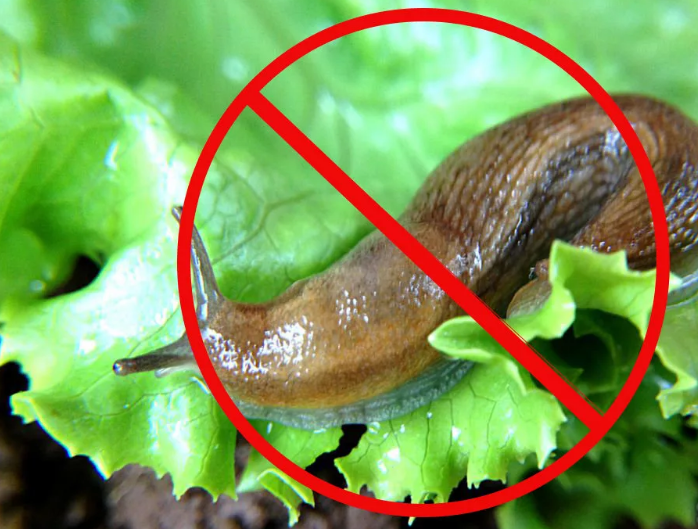
In getting rid of slugs, folk methods of struggle will help. Their action is based on the appearance of a pungent odor or a bitter taste, which slugs categorically cannot stand. It takes 2-3 treatments so that the pests leave the vegetables and do not appear on them anymore.
Vinegar
The most common option for eradicating pests is to prepare an acetic solution. Sour taste and smell instantly scare away slugs, and they leave.
Dilute the solution:
- 100 ml of vinegar 9%;
- 10 liters of water.
The resulting mixture is poured into a spray bottle and irrigated with cabbage, focusing on the lower part and under the leaves. You can water with diluted vinegar and the soil around the cabbage. The treatment is repeated after 3-4 days.
Ammonia
Another substance with a specific odor is ammonia.The ammonia contained in the composition has a beneficial effect on the development of green mass in the head of cabbage, and after processing the cabbage will become lush.
For processing, dissolve 4 tbsp. alcohol in a bucket of water and spray the solution onto cabbage heads. Interval of use is 1 time in 5-7 days. It is enough to use ammonia 2-3 times, and the pests will disappear forever.
Mustard powder with pepper
The mixture has a miraculous effect and is able to remove pests even after the first time.
Prepare the supplement:
- 10 liters of hot water;
- 3 tbsp mustard powder;
- a glass of hot pepper chopped into small pieces.
The mixture is insisted for 2-3 days, then filtered and irrigated with it the entire crop from top to bottom, including soil. Repeat the treatment after 7 days after the first time to consolidate the result.
Onion husk broth
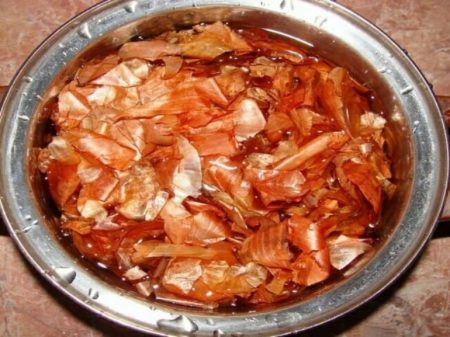
Regular onions can be very helpful in the fight against shellfish. Peel the husks from 4-5 onions, pour it into a pan and pour 5 liters of water. Cook the mixture on fire for 20-30 minutes, and then insist another 24 hours. Filter the solution from the husk and spray cabbage 1 time per week 3-4 times a month.
Prevention
In order not to waste time on pest control, their attacks can be avoided. The surest way in this way is prevention. Slugs certainly will not come into the garden if:
- Before planting, carefully dig the soil and treat it with copper sulfate (2% solution) or potassium permanganate;
- during cultivation do not abuse watering cabbage. The earth must be allowed to dry before the next watering;
- a thin layer of ash or lime is poured onto the ground near the cabbage. They are fatal to mollusks;
- near cabbage head to plant lemon balm, mint, dill or onions. Plants with pungent odors scare away not only slugs, but also most of the insects.
Advice
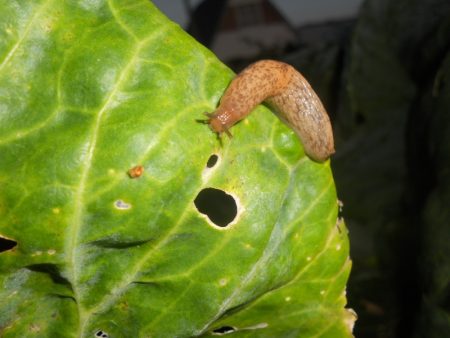
For effective control of slugs, you can use several useful tips:
- some slugs are removed manually. Do it as soon as it gets dark in the street. Using a flashlight, cabbage leaves are highlighted and pests are removed in a jar. Then they burn the jar.
Before removing slugs, you need to wear gloves.
- Near cabbage lay low slats or plastic bottles. Slugs are afraid of obstacles and will not attack cabbage;
- slugs are sometimes attracted by special baits: sweet syrup is poured into a deep bowl of water. It attracts mollusks, and they fall into the water, and then die.
Most often, pest control does not last long and is marked by success. The sooner measures are taken, the less damage will be done to the crop. Slugs are one of the most easily eliminated pests, but if they are inactive, they can be very dangerous.

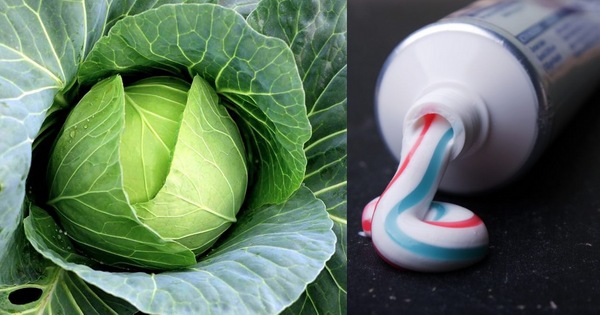
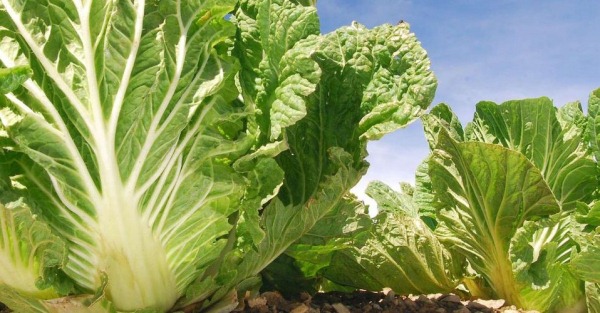
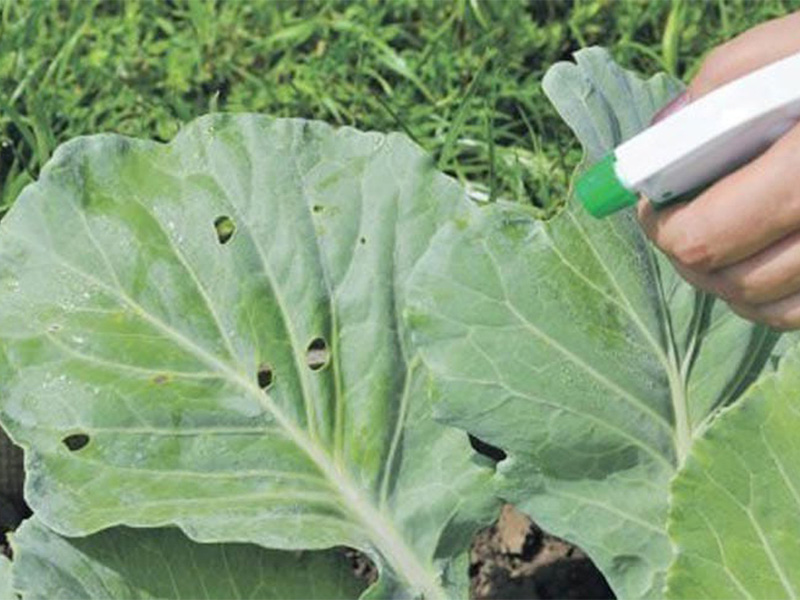
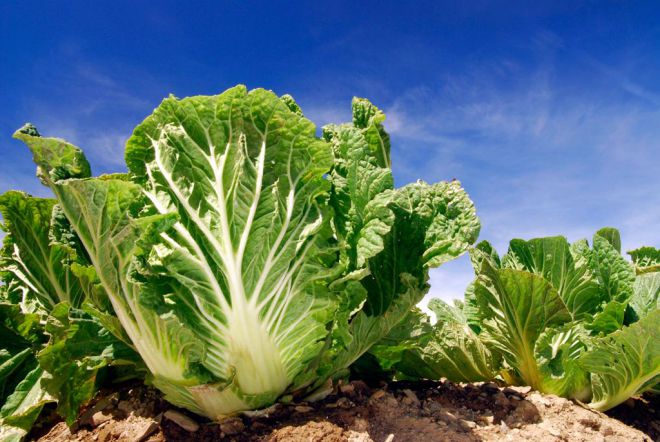 How to grow Chinese cabbage on your site?
How to grow Chinese cabbage on your site?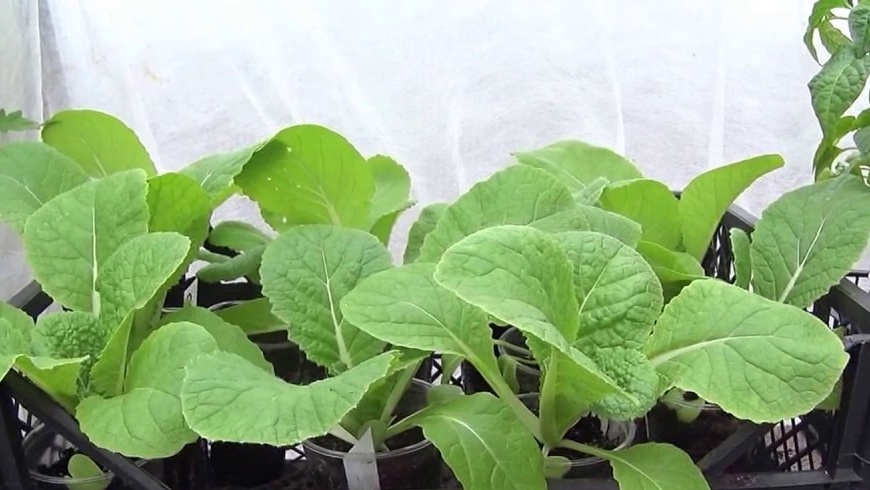 When to plant Chinese cabbage on seedlings in 2024
When to plant Chinese cabbage on seedlings in 2024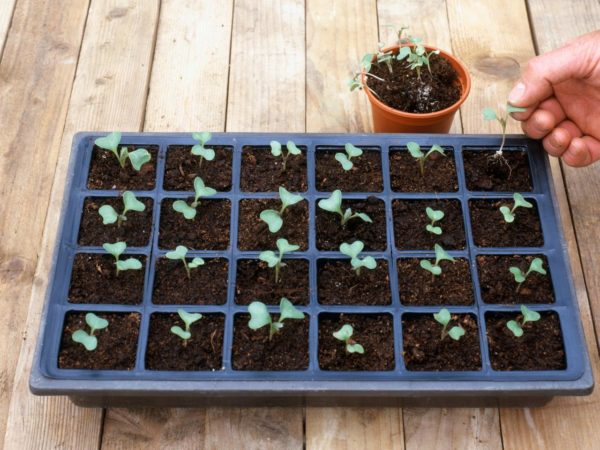 When to sow cabbage for seedlings in 2019 on the moon
When to sow cabbage for seedlings in 2019 on the moon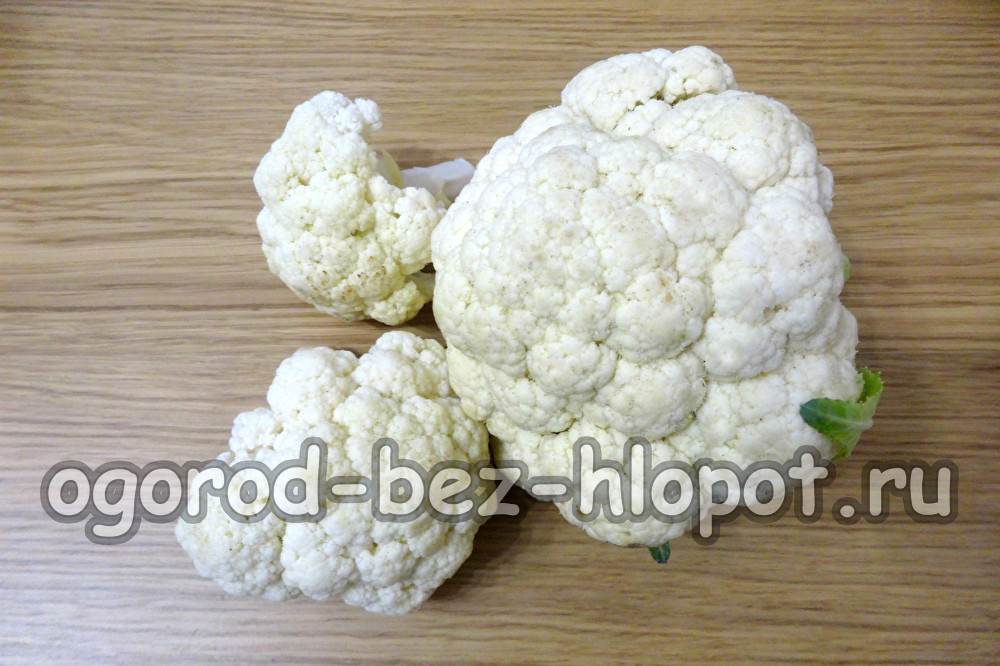 Cauliflower: how to grow large snow-white inflorescences
Cauliflower: how to grow large snow-white inflorescences